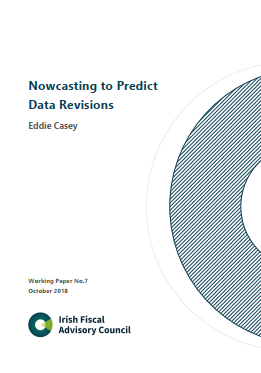This Working Paper uses “nowcasts” as a means of predicting revisions to initial estimates of economic activity.
What are “nowcasts”?
Nowcasts are usually defined as estimates of economic activity in the recent past, present or near future. They often avail of information from a large set of monthly economic indicators.
Why are they useful for predicting data revisions?
Official national accounts measures of economic activity are typically published with a long delay and at quarterly frequency. Sometimes, we might be interested in using monthly data to obtain earlier estimates (or nowcasts) of economic activity in the current quarter.
In cases where initial quarterly national accounts estimates are prone to large revisions—like in Ireland—nowcasts might also act as a means of predicting the size and direction of revisions to initial estimates of economic activity. We might therefore see nowcasts as an alternative view of current economic activity—one that can be used as a complement for initial national accounts estimates. When combined, both the nowcasts and the initial estimates might give us a better sense of how final estimates might look once these have been through a number of revisions.
What do the results show?
The results show that nowcasts can be used together with initial outturns to help to predict the final revised outturns. They do so primarily by reducing bias in the initial estimates. While the estimates produced are less biased, they are still highly uncertain.

